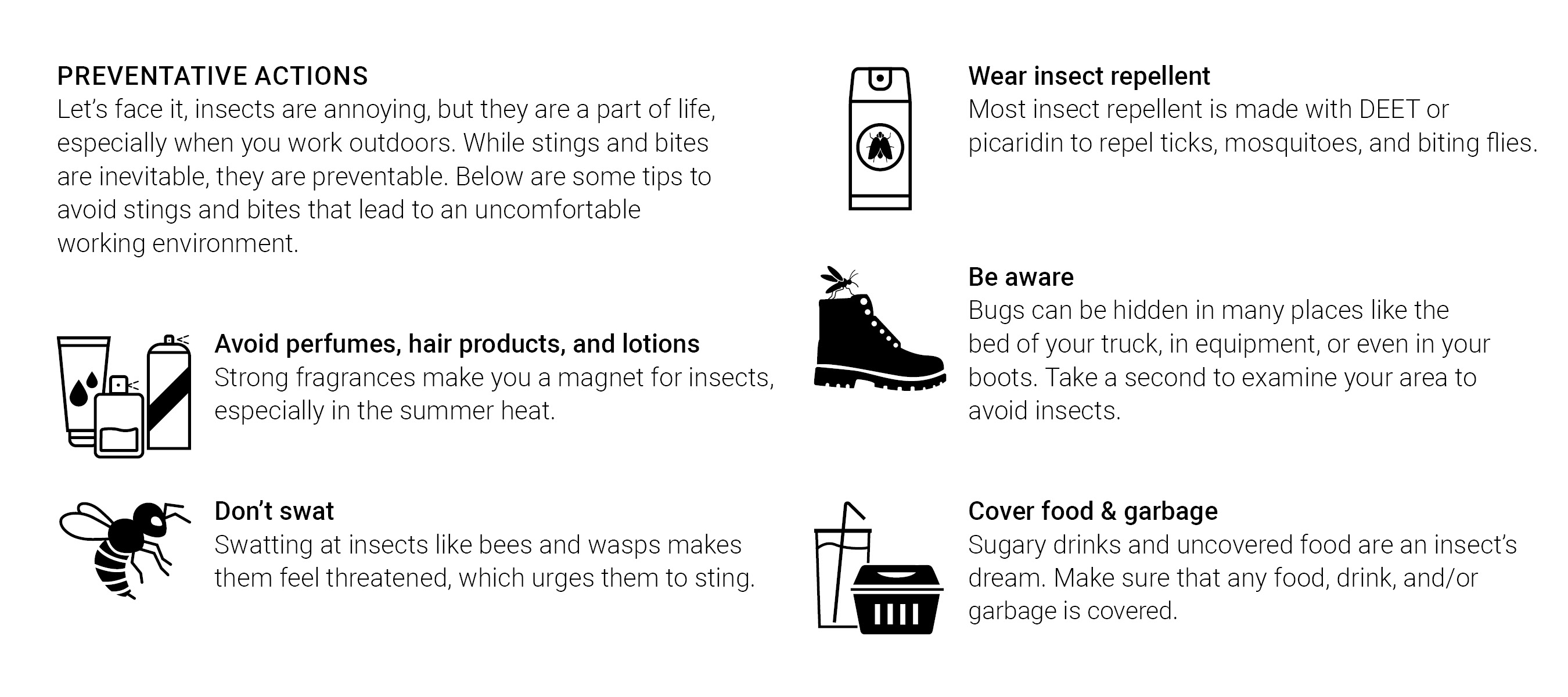Summer brings picnics at the park, pool days with friends, and unfortunately, pesky insects. Working in the field, you understand that it is impossible to avoid encounters with the common summer insects. Without the knowledge on how to prevent and treat an encounter with one of these insects, a bite or a sting can cause a damper on your once pleasant, summer day.
Bees
Places they live: Anywhere where flowers bloom, woodlands, orchards, meadows
Symptoms of a sting: Skin reactions, redness, mild to moderate swelling
Treatments for a sting: Applying honey, toothpaste, baking soda, or apple cider vinegar to the affected area
Wasps
Places they live: Urban/suburban settings, playgrounds, cemeteries
Symptoms of a sting: Sharp pain, burning, redness, swelling, itching
Treatments for a sting: Clean infected area, apply an ice pack, apply vinegar to infected area
Spiders
Places they live: Inside where moisture and food is available, basements, garages, storage spaces, wooded areas
Symptoms of a sting: Swelling, numbness, tingling, itchy
Treatments for a sting: Apply an ice pack, do not scratch bite, clean the bite to avoid infection
Mosquitos
Places they live: Stagnant water including ponds, marshes, swamps, wetland habitats
Symptoms of a sting: Raised, red, itchy bump
Treatments for a sting: Avoid itching, apply ice, wash with soap and water, apply calamine lotion or anti-itch cream
 Ticks
Ticks
Places they live: Grassy, brushy, or wooded areas.
Symptoms of a sting: With a tick carrying a disease, you will experience nausea, weakness, fever, chills, red spot or rash near bite site, neck stiffness, headaches, muscle or joint pain, swollen lymph nodes
Treatments for a sting: Use tweezers and remove the tick closest to your skin surface. For a non-diseased tick, be sure to clean the bite site with soap and water
 Black Flies and Horse Flies
Black Flies and Horse Flies
Places they live: Moisture heavy areas like rivers, creeks, swamps, etc.
Symptoms of a sting: Swelling, itchiness, redness, lymph node swelling, skin rash
Treatments for a sting: Apply ice to the area and consistently wash the bite with warm water and soap
Spotted Lantern Fly
Spotted Lanternflies are becoming a frightening topic in the states of Pennsylvania, Delaware, New York, and Virginia. Spotted Lanternflies were first discovered and are native to China, India, and Vietnam. This species is known as sap sucking insects who feed on the juices of plants and trees. Once a tree or plant is infested with Spotted Lanternflies, they quickly start to whittle away and produce a grayish, black ooze along the tree trunk. Trees are also used as a place for female Spotted Lanternflies to lay their eggs. Major industries are being affected by Spotted Lanternflies, including fruit farms and wineries. The United States Department of Agriculture has allocated $17.5 million to end the spread of this species. It is important to understand what to do when you come in contact with this species and how to prevent the spread.
What you can do
- Look before you leave: make sure to inspect your vehicle and outdoor items before you move around them.
- Exterminate them on sight.
- If you find a Spotted Lanternfly egg mass, make sure to double bag them and throw them away.
- Spray your tree with a foliar insecticide to rid your tree of Spotted Lanternflies.









